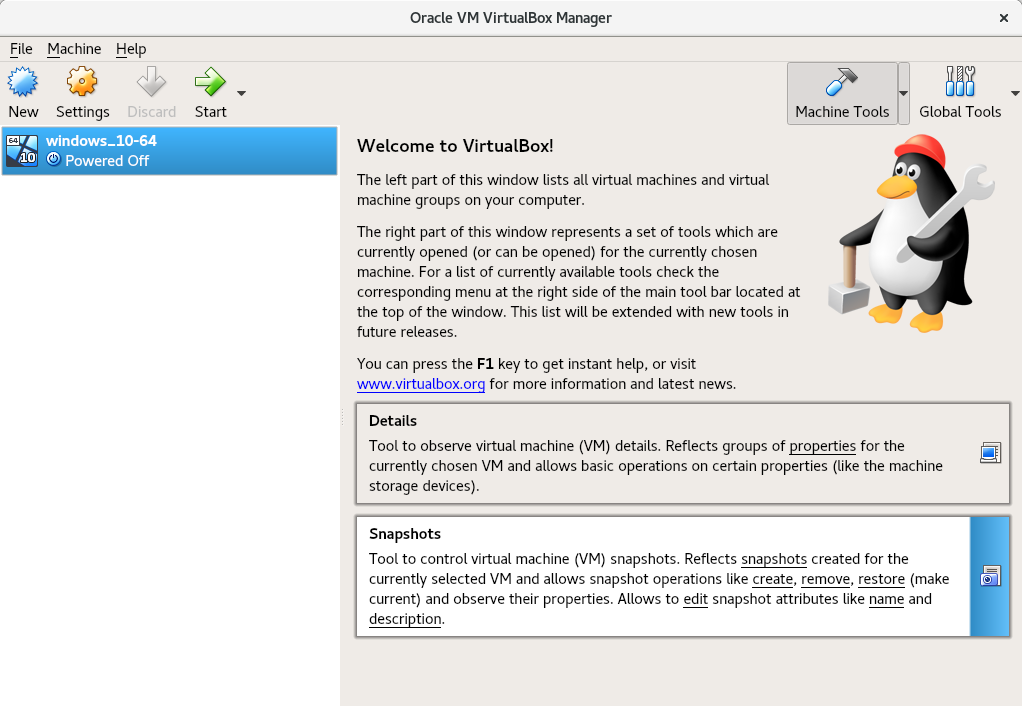
- #Oracle Virtualbox Vs Vmware Player Full Clone Is
- #Oracle Virtualbox Vs Vmware Player Mac OS X Interacts With
Oracle Virtualbox Vs Vmware Player Full Clone Is
Licensing gives me a headache though so I could be wrong. Virtual Box: Comprehensive Comparison. Oracle and VMware are leaders in providing virtualization solutions in the modern IT industry. Oracle provides VirtualBox as a hypervisor for running virtual machines (VMs) while VMware provides multiple products for running VMs in different use cases. Both platforms are fast, reliable, and. A full clone is an independent copy of a virtual machine (VM).
If I were running Windows and I wanted to spin up a VM locally I would use Hyper-V. As it is now I use KVM/QEMU on my Linux Desktop, or spin VMs up on my dedicated XenServer host.Alas, I'm still running Windows 7 though. Waiting for Win10 licensing to come through.VMWare vs VirtualBox: 5-Point Comparison to Help You Decide. Here is a 5-Point comparison that’ll help you decide which virtualization tool you should choose.

Test an application? Switch to a different OS without shutting down? Run a program that only works in Windows? The possibilities are endless.For institutions that would like the opportunity to provide a cloud like environment tools such as Oracle Virtual Box and Vmware Player provide that ability. For many users, virtualization is a daily part of the computing experience. The most obvious difference surrounded by the three products is that Client Hyper V is a type 1 hypervisor. Hyper Vs VMware VS VirtualBox Overview. VirtualBox, vs Hyper v we’re looking for a tool that will by now make and provision virtual machines (VMs) going on for desktop devices presidency an x86-based platform.
The project website is a little vague on what to do if you want to use the VirtualBox extensions for commercial purposes, but the answer appears to be the VM VirtualBox package from VirtualBox parent company Oracle. You can use the extensions without cost for non-commercial purposes. VMware Workstation Player is only free for non-commercial uses if you want to use it for business, you'll need to buy a license.VirtualBox is indeed a free and open source virtualization solution, but certain advanced features are collected into an extension pack that you'll need to install separately. VMware does make a no-cost version of their VMware Workstation solution called VMware Workstation Player. The reality is a bit more complicated. The common conception is that VirtualBox is a free tool and VMware is a commercial solution with a price tag.
Installation: VirtualBoxSee the box entitled "Testing Environment" for a description of the system used for the tests in this article.Figure 2: The main windows of VMware Workstation Player (left) and VirtualBox (right) appear very similar. Keep in mind, however, that VirtualBox is free as in free speech as well as in beer (with a GPLv2 license) and VMware Workstation Player is free for personal use but does not have a FOSS-style free license. This article compares the free versions of both tools, although you'll also find some notes about the add-on extension packages.
Oracle Virtualbox Vs Vmware Player Mac OS X Interacts With
The Hard Disk options are remarkably extensive ( Figure 3): You can mount a virtual disk in the host, defragment, shrink, or enlarge. In the Hardware tab ( Virtual Machine | Settings), you will find settings for the network, the USB controller, the sound card, and the size of main memory.The Options tab contains, among other things, settings for remote access, shared folders, and start behavior. Mac OS X interacts with VirtualBox but does not work with VMware Workstation Player.In Player, you can complete the detailed configuration via Edit virtual machine settings once you have finished the basic program setup. Virtually all major operating systems support both VirtualBox and VMware Workstation Player, including Windows, Linux, BSD, Solaris, and Novell Netware. In each case, the dialog asks for the intended operating system and the size of the virtual disk.
VirtualBox serves a maximum of four virtual interfaces that support five different modes in the Network section. In the Display section, set the size of memory of the virtual graphics card, the scaling of the host window, and the number of screens.VMware Workstation Player allows the addition of up to ten network interfaces in three modes ( NAT, Bridged, and Host-only) in the Network Adapter section. The exceptionally powerful command-line tool VBoxManage adds some additional options for VirtualBox users if you are comfortable working in a terminal window.Figure 3: Beyond the sparse main window, VMware Workstation Player provides a variety of options for guests to customize the system's hardware.In VirtualBox, you can set up the host system by clicking on the Settings icon.
You can change, for example, the order of booting or USB settings. After activating the desired card, click the Advanced button, and a new window will open.In addition to the parameters that can be accessed via the configuration dialog, VMware Workstation Player also offers other parameters in the BIOS. This function ensures that the guest does not negatively affect the host operation. VirtualBox provides two other adapters that are missing from Player.Player provides a special function that lets you specify what bandwidth the virtual machine may use for inbound and outbound network traffic.
VMX ) of the virtual machine ( Listing 3) makes sure that the BIOS setup appears first when launching the machine ( Figure 4). An entry in the configuration file (.


 0 kommentar(er)
0 kommentar(er)
